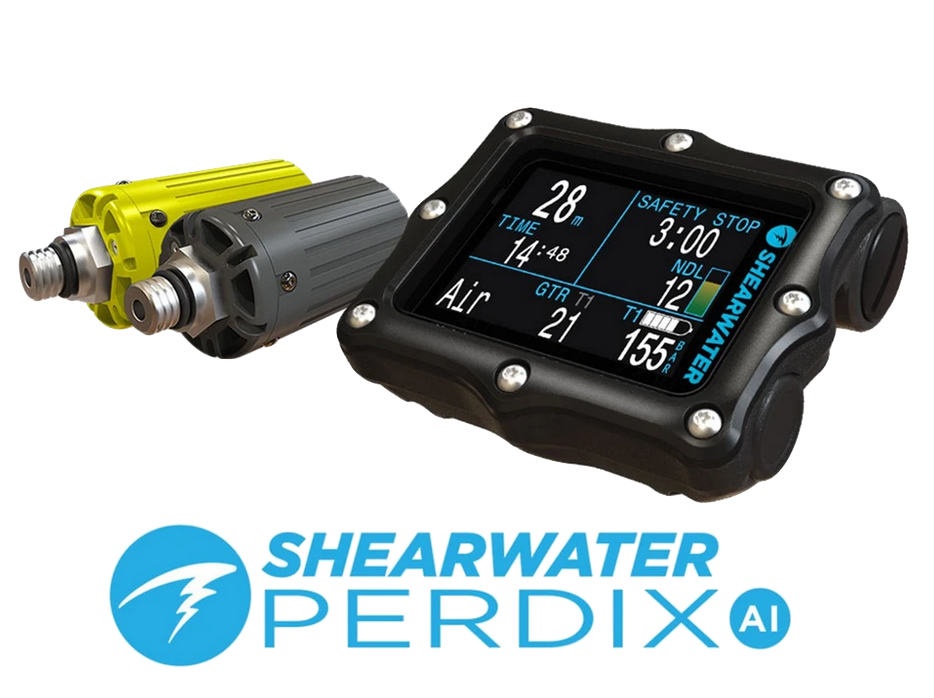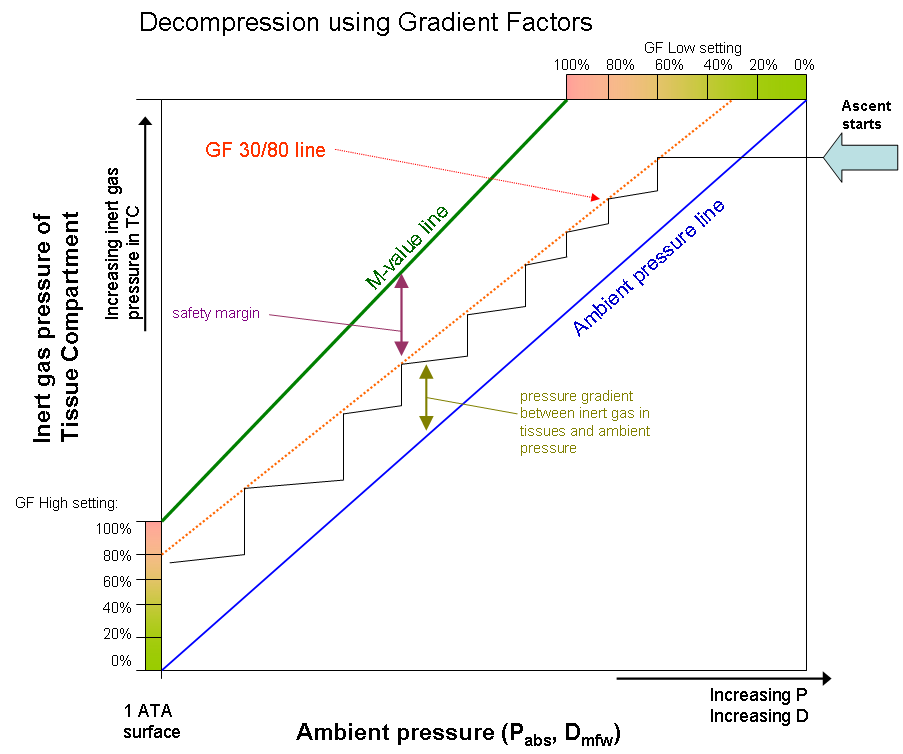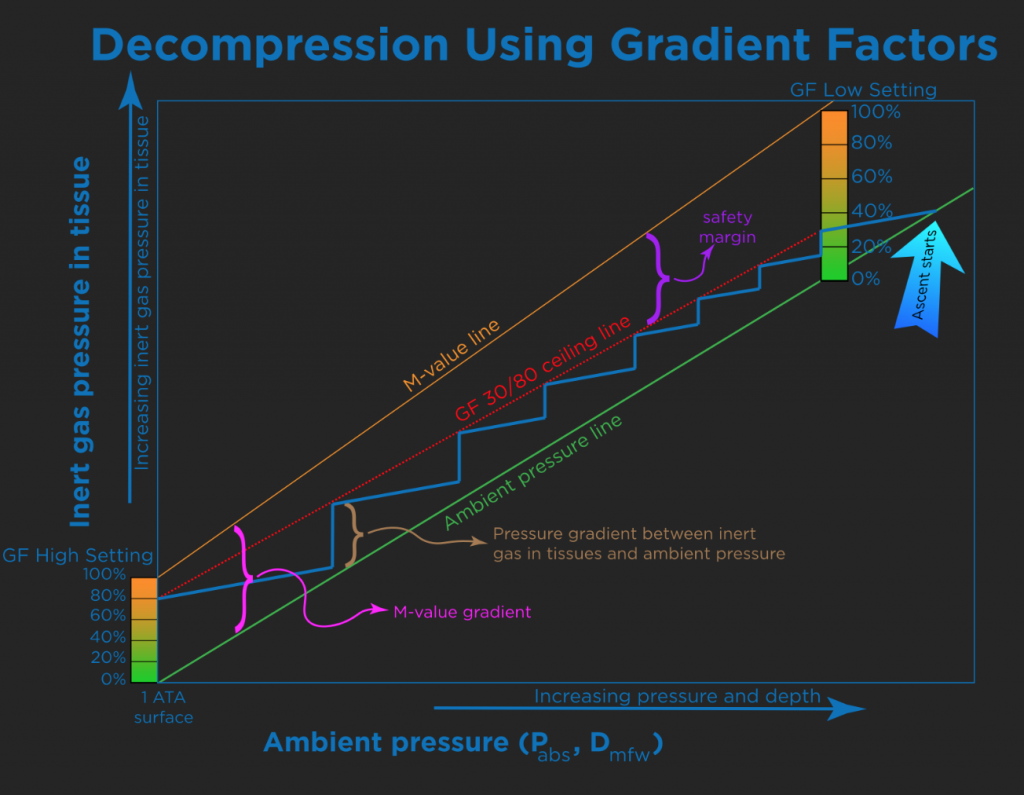When is time to choose your dive computer and/or decompression algorithm… the market is rich in options for both needs. Sometimes confusing and too technically explained.

The below descriptions are not to go deep into the decompression theories or dive computers settings but rather just to give you a quick, basic and clear (I hope) description of what to expect. For dive deco theory you can find tons of good information online and normally is explained (on different levels) during the basic & advanced technical courses too.
What Is an Algorithm used in Dive Computers?
In a simple words, a dive computer algorithm is a mathematical formula(s) used to calculate your diving profile in the safest (theoretical) mode taking into considerations some factors: depth(s) and time at that specific depth(s), gas mixture(s), cylinders pressure/volume, ascent rate and mandatory deco/safety stops, surface interval between dives, water temperature, physical fitness (heart beats per minute), diving conditions etc.
The main goal of a dive computer algorithms is to keep the risk of decompression sickness (DCS) to an acceptable level based on theoretical models as per the latest research in the industry and data (set up into the dive computer) from actual dives.
No dive computer or decompression algorithm will ever know exactly what is really going on into your body, if your data set up are correctly or if you fallow all the good practice recommendations before and after the dive!
Everything is just at a theoretical level!
But the future is already here so the science is with us: O’Dive Doppler technology is giving you the opportunity to do a real on-site N2 micro-bubbles measurements post dive and see, adjust and improve your Quality Index diving profile!
As you already might noticed, various dive computers are using various decompression algorithms which leads to slightly different diving profiles.
So… what are the theories behind the decompression algorithms?
Haldane Decompression Theory: 1908, used till 1980’s by US Navy air tables, outdated by now.
Bühlmann Decompression Algorithm: 1960’s. ZH-L, from Zürich (ZH), limits (L) followed by the number of tissue compartments (and other identifiers).
- Garmin , Mares – ZHL-16C
- Shearwater – ZHL-16C with GF + optional VPM: very well rated for Sport & Advanced Technical levels OC/CCR
- Scubapro – ZHL8 ADT MB + Human Factor Diving™
- Aqualung – Pelagic Z+ (PZ+)
- Freedom Divesoft: ZLH16 B + GF
- RATIO iX3M: ZHL-16 B and VPM-B
VPM – The Varying Permeability Model: 2000-2002, Erik Baker and Eric Maiken. Not much used these days.
- The VPM-B/E model variation is for the extreme or extra long dives and exposures.
- The VPM-B/FBO model variation (Fast Bail Out) is for the use with closed circuit diving and a bail out situation.
- The VPM-B + GFS model combination (Gradient Factor Surfacing) produces another type of relaxed profile.
RGBM – The Reduced Gradient Bubble Model:
Is used more at a recreational level, not in technical diving. Is giving quite long and unrealistic conservative deco profiles.
DSAT – The Diving Science And Technology Model : developed by PADI for Recreational Dive Planner (RDP).
- Oceanic – DSAT or Pelagic Z+
GF – Gradient Factor – is the latest trend in the industry (integrated into many technical diving computers) and is defining as: “GF are presented as a fraction of the maximum inert gas “supersaturation” or M-value that can be tolerated by each of the theoretical tissue types or “compartments” (ZH-16) considered by the Buhlmann model without resulting in DCS.”

In your dive computer settings you’ll find two values: GF Low and GF High:
- Low defines the first decompression stop – Lower the number, deeper the first stop – Pyle)
- High defines the surfacing value – The higher Gradient Factor value (GF Hi) determines the surfacing tissue supersaturation.

There are other algorithms (military & commercial) used in the diving industry but either outdated or not applicable for sport/technical scuba diving (Cochran – EMC-20H).
The above details are not to be taken as accurate 100% but just as basic reference. There are many variations of the presented algorithms, not scope of my presentation.
Diving theory is extremely complex subject with lots of pro and cons on all sides.
Few personal recommendations:
- Do your research before purchasing a diving computer. I know the price (your budget) is the number one criteria, but look a bit further for your needs (present & future).
- Try to understand the settings (and keep them updated as per your dive plan) & limitations of your dive computer. Read the manual, ask a professional opinion!
- Set & Adjust your decompression algorithm based on YOUR profile and not on your buddies! Simply because a Gradient Factor set-up works (apparently) good on your buddy doesn’t mean necessarily that will work (good) for you too!
- Keep in mind that not every dive is the same and not every day your body is the same (in fact, getting older and more “gnawed” day by day therefore attention must be increased into extending/improving the safety margins).
- There is no perfect and guaranteed diving algorithm & diving computer. Therefore, accidents, including DCS might happened. If you want to be 100% safe, choose a good Netflix documentary and watch it on while relaxing on your sofa.
- Same computers (same brand) with small different inside setting can give different diving profiles therefore buddy check should include the diving computer basic too.
Who knows, maybe in 10 or 20 years, the methods used today will be considered outdated and unsafe and other theories and devices will support our hobby. Till then, stick to what is good known and proved so far.
Stay updated with the latest news & research, be flexible in understanding and applying the science in your diving activities.
Keep training, keep exploring, stay strong & stay safe!
Costa




